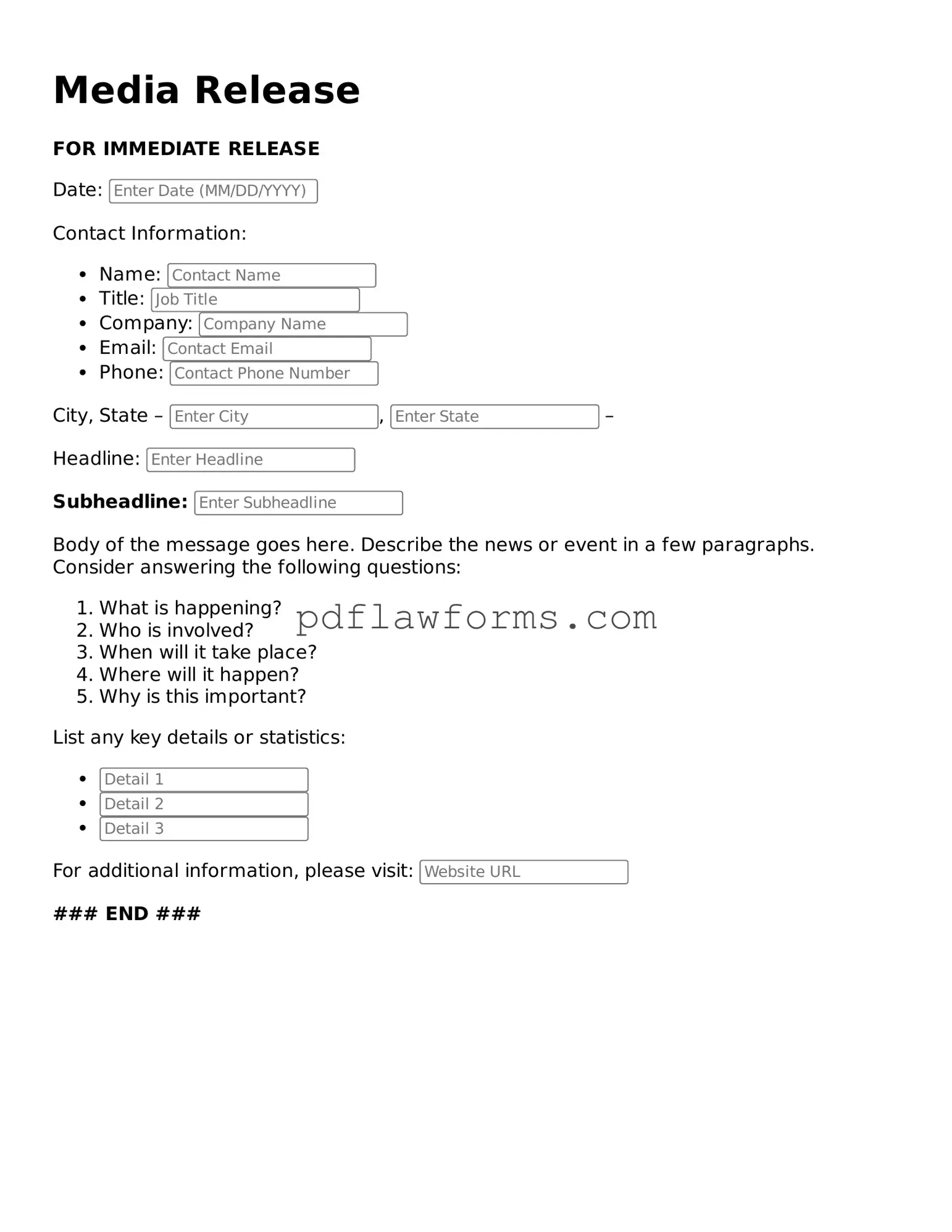Filling out a Media Release form can seem straightforward, but many people make common mistakes that can lead to issues later on. One of the most frequent errors is not providing complete information. When sections are left blank or incomplete, it can create confusion and delay the process. Always ensure every field is filled out accurately.
Another mistake is failing to read the terms carefully. Many individuals skim through the fine print, missing crucial details about how their information will be used. Understanding the terms is essential to avoid unexpected consequences later.
Many people forget to sign the form. A signature is often required to validate the release. Without it, the document may not hold any legal weight, rendering the entire process ineffective. Always double-check that a signature is included.
Not providing the correct date is another oversight. A Media Release form should have the date of signing clearly indicated. If the date is missing or incorrect, it can lead to complications regarding the validity of the release.
Some individuals neglect to specify the scope of the release. It’s important to clarify what is being released and for what purpose. A vague release can lead to misunderstandings about how the media can use the information or images.
Another common error is overlooking contact information. Providing accurate contact details ensures that the media can reach you if they have questions or need further clarification. Missing this information can result in missed opportunities.
People often fail to keep a copy of the signed form. Retaining a copy is crucial for your records. If any disputes arise, having documentation can protect your interests.
In some cases, individuals do not consider the implications of the release. Understanding what you are agreeing to is vital. If the terms are not clear, seek clarification before signing.
Lastly, many forget to involve legal counsel when necessary. If the release involves sensitive information or significant rights, consulting with a legal expert can provide peace of mind and ensure your interests are protected.
Avoiding these mistakes can make the process smoother and more effective. Take the time to review the form carefully, and ensure all necessary details are included. Your diligence will pay off in the long run.
